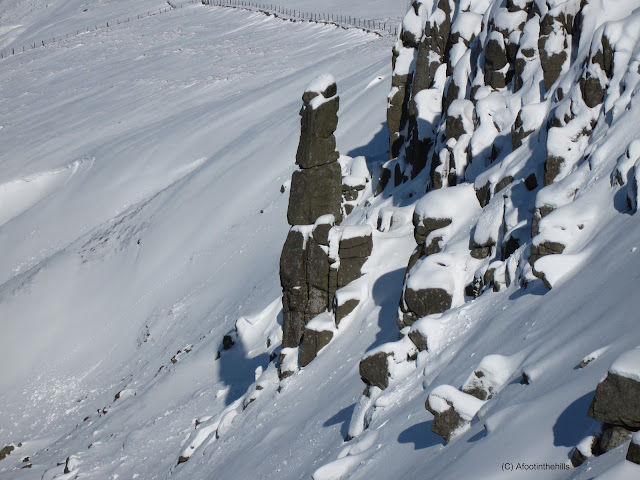The castle was used as a state prison (its first use) when, in 1316, King Robert the Bruce imprisoned John of Lorne there; in 1390 it was granted to the Douglas family as a royal stronghold. In 1567 Mary Queen of Scots was imprisoned in the castle and forced to abdicate in favour of her infant son James, later King James 1st, uniting England and Scotland. She escaped in 1568.
Now managed by Historic Scotland, a frequent ferry service runs from the pier to the castle during the summer and despite living nearby for many years, we have yet to make a visit there. Likewise we have still to walk the full 'Hertitage Trail'. Some way round, Lynne spied a cluster of yew trees off the path and guessed an old graveyard would be found there.
It was indeed just that and so we spent a pleasant hour 'Guddling among the Graves'. This was the title of a series of illustrated talks by Hamish Brown about the folk art of Scottish gravestones, a talk which eventually gave birth to his fascinating book 'Scottish Graveyard Miscellany'.
| Note the hourglass ('the sands of time are sinking') and the skull and crossbones |
We were in fact at the site of the old Orwell Kirk, (without a church, the 'graveyard' would be a cemetery) which was moved to Milnathort in 1729. Now another building stands here - a mausoleum dated - 1865.
The earliest date we could find on a stone, was 1633 (and on the same stone 1688.) Note the spelling of 'year' as it was then.
The two photographs above show 'table stones', the gravestone having been placed on legs to prevent wear.
Further along the Trail is a seat with a rhyme in Scots carved into the backrests.
It relates to standing stones found on the land of Orwell Farm. The stones, which can't be seen from the trail, mark the site of cremation deposits which have been dated 2300BC.
| In the centre backrest |
To our east lay Bishop Hill and below it the village of Kinnesswood, once an important centre for the maufacture of vellum and parchment. Alexander Buchan the 'Father of meteorology' was a Kinnesswood man who identified the principles of isobars:
Buchan warned of windy weather
When isobars lay close together
We've enjoyed many a fine walk on Bishop Hill .........
| Bishop Hill from the Heritage Trail |
....but none better than in March 2010 when we paid our respects to Carlin Maggie.
The whole Trail covers 12.5Km and there is much more to tell than I have done here. One day we really must walk it in its entirety - and take that boat trip to Loch Leven Castle as well.
Note: much of the above is courtesy of the Loch Leven Heritage Trail with some checks from Lynne.



